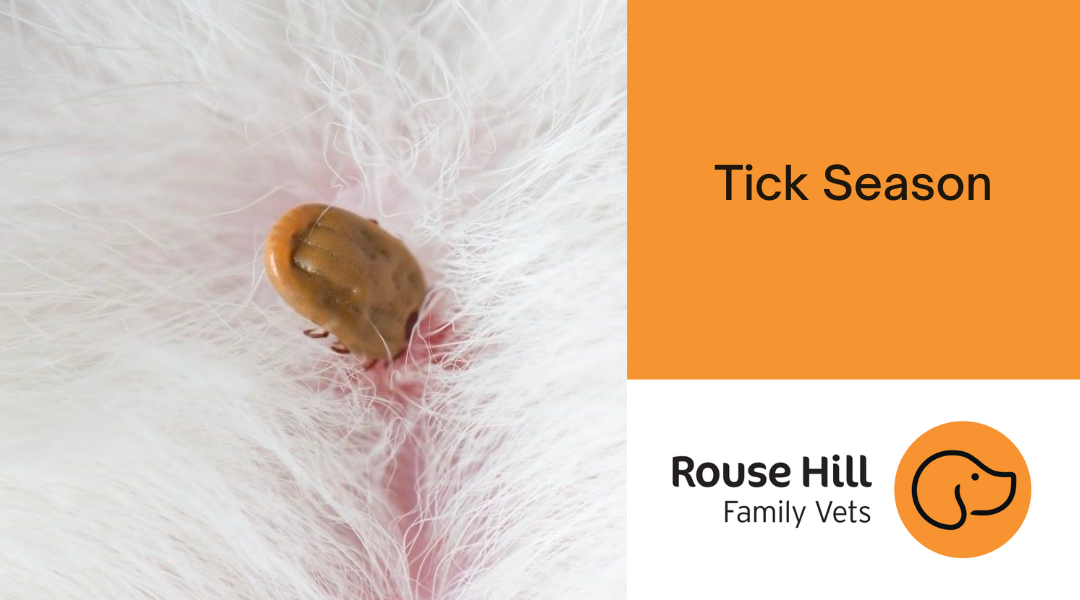Why are ticks a problem?
There are a few different species of ticks however the ones we are the most worried about are Paralysis ticks. Paralysis ticks do just as their name suggests and can cause paralysis in dogs and cats, often starting in the back legs and making their way forward in the body to eventually cause total paralysis and ultimately death.
What signs do I look for?
Sometimes ticks can be very sneaky and wedge their way into unnoticeable areas on our pets such as between the toes, near the eyes, under their gums and even in and around their genitals! Because of how sneaky they are we often don’t see the signs of tick paralysis until they are quite serious and require immediate veterinary treatment.
Some of the signs to look for include:
- Inappetance or going off their food
- Lethargy/tiredness and suddenly not wanting to get up much
- Trembling, shaking or weakness in the back legs
- Vomiting and/or gagging
- Increased breathing rate or effort **
** If your pet is showing any signs of breathing difficulties, regardless of whether or not you have found a tick, please notify us and bring them down immediately. Any breathing issues can be life-threatening and should always be assessed immediately.
What do I do if I find a tick?
- DO NOT ATTEMPT TO PULL OFF THE TICK! Often when people try to remove the tick manually with tweezers or similar tools they can accidentally squeeze the tick which leads to it injecting a sudden large amount of toxin through the bloodstream causing more damage! They can also accidentally pull off the body of the tick, leaving the head attached, which contains the toxin in the ticks’ saliva, and toxin can continue to be released even after the tick’s body is removed. We also require the tick to be examined under the microscope to correctly identify it. Our staff will use a specialised tick remover to safely remove the tick completely and check to see what species it is.
- Use a marker to draw a circle around the tick to make it easy to locate.
- Book an appointment to get the tick removed and identified by one of our staff.
How do I prevent ticks?
- Tick preventatives are the easiest and most effective way to prevent and control ticks. There are a number of products on the market that are available to use on both cats and dogs. The two tick preventatives that we routinely stock here at Rouse Hill Family Vets are:
- SIMPARICA TRIO or BRAVECTO for puppies and dogs and;
- REVOLUTION PLUS for kittens and cats.
- Ensure the correct size of tick treatment is used based on your pets’ weight. If you need a weight check you can just let us know and book a free of charge consultation with one of our trained nurses. We can also administer your pets’ preventative for you while they are here!
- Ensure preventatives are given on time every dose. If purchased from us our system will automatically send you a reminder to redose your pets when they are next due for a treatment! Just ensure the first dose is given on the date of purchase to keep dates lining up smoothly. You could also just set a reminder on your smartphone to ensure your furry friends aren’t at risk of contracting any nasty parasites.
- Routinely check your pets over for ticks especially if you live in a very bushy/woodland area or have visited a ‘’high risk’’ area like coastal suburbs.

